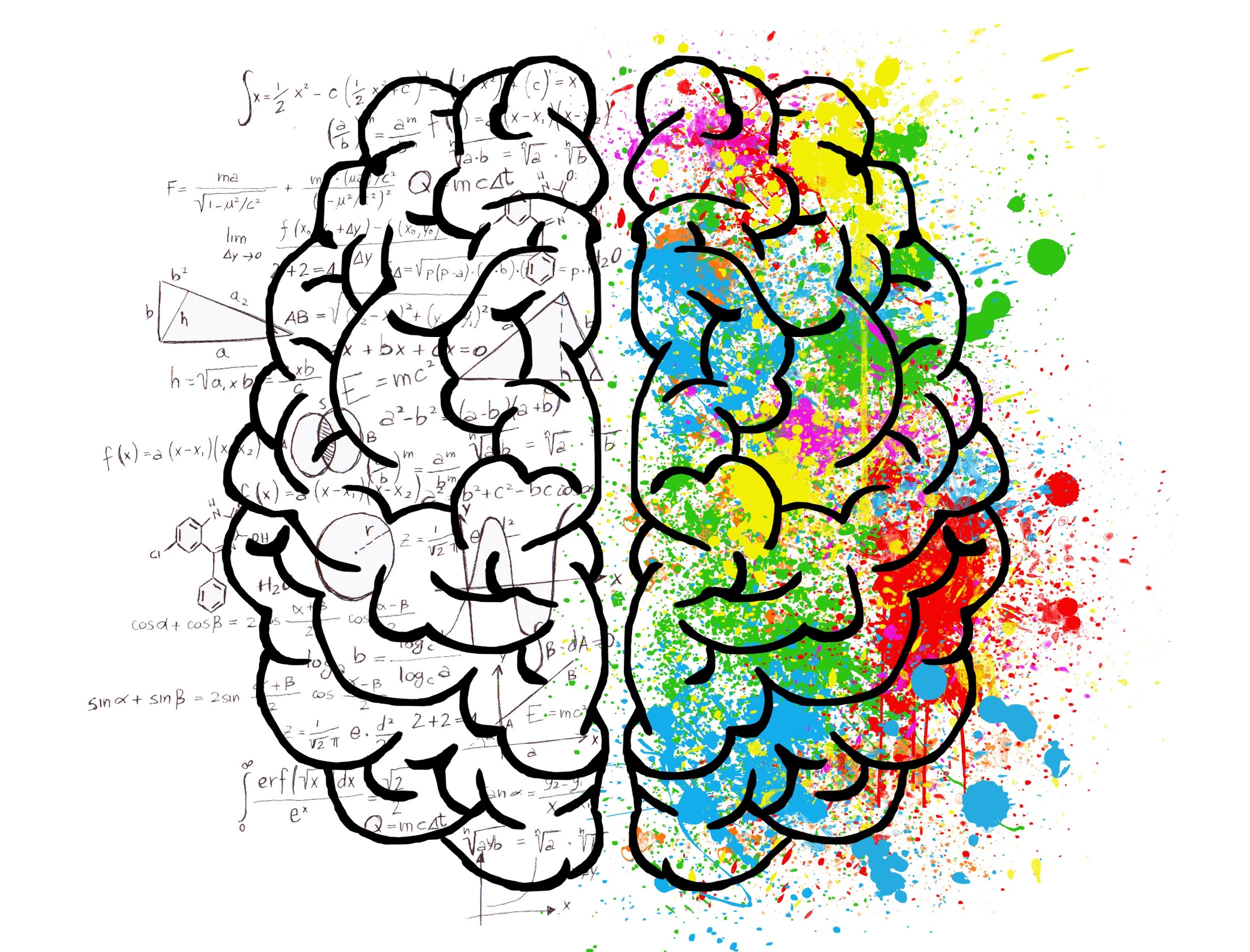No, you're not right-brained (or left-brained)
Greetings, fellow humans. This question is courtesy of someone who wishes to be known only as An Interested Reader from the North.
I think most people have heard the idea that there are left-brained people and right-brained people at some point or another. If you haven’t, here’s a quick run-down of the theory: just like most people have a dominant hand that they do most tasks with, they also have a dominant side of the brain that they do most tasks with. Right-brained people tend to be creative and intuitive, and left-brained people are logical and analytical.
Is it true? Is it not!
But here is a related thing that is true: the hemispheres (left and right sides) of your brain don’t divide up tasks equally – some tasks largely happen in one hemisphere, and some largely happen in another [i].
Human brains typically do most of the processing of language in the left side and may process emotions mostly on the right side or perhaps different emotions on different sides (you might remember this from an earlier blog of mine on selfies). Interestingly, it’s not just human brains that do this; when a frog croaks, the left side of its froggy brain is doing more of the work than the right side. However, even if a frog is really good at croaking, that doesn’t mean it’s a ‘left-brained’ frog. Similarly, a human who is really good at emotions is not ‘right-brained’.
The source of the myth is probably some experiments done in the 1960s [ii]. The researchers doing these experiments looked at the way people processed information after they had had surgery that separates the two hemispheres of the brain.
Why would you want to separate the hemispheres? Because of epilepsy.
Having an epileptic seizure is almost like having a wildfire in your brain. The seizure can start at one point in your brain and spread from there, eventually causing you to lose consciousness. Seizures are temporary but also dangerous as it’s usually not possible to predict when one is going to happen.
Well, at least it’s possible to keep them under control with medication, right?
… Unfortunately, not everyone’s epilepsy responds to medication, which could create some huge difficulties if you have medication-resistant epilepsy and severe seizures. If you’re in that group of people, you might be offered surgery to sever the pathway joining the two halves of the brain (in yellow below – the picture shows the brain as you would see it if you sliced it across horizontally about halfway down). This area, the corpus callosum, joins the left and right halves of the brain together. Cutting it prevents the seizure from spreading between halves of the brain, and surprisingly has relatively few side effects.
This surgery means that the two sides of the brain can't pass information back and forth between themselves any more. Usually, this isn’t a problem – the two halves of the brain get the same inputs from the world, it's just that without the corpus callosum connecting them, they deal with these inputs separately.
However, it’s possible to present things to only one half of the brain by presenting them in one half of the visual field (that is, so that they are only visible in one half of each eye). If you are someone who's had your corpus callosum severed, then you may notice some interesting effects. For example, if you are shown an instruction that's only visible to the left side of the brain, you will be able to read and follow it. If it's shown only to the right side of your brain, you won’t know what the instruction is. This isn’t the case with a person who hasn’t had the operation: the right brain and the left brain share information and work together, neither one dominating the other.
It's pretty easy to imagine that this research got garbled somewhere along the way as it traveled from the researchers who did it toa journal article to the mass media and into the minds of the public. Voilà, a myth was born.
Now that you know the right-brained/left-brained myth is not true, I’d like to ask to a favour.
A 2012 study [iii] found that over 90% of teachers in the UK and over 80% of teachers in the Netherlands believe the statement, “Differences in hemispheric dominance (left brain, right brain) can help explain individual differences amongst learners.”
I don’t say this to blame teachers; as we have just seen, it is very easy to draw that conclusion from what you hear about research on the two halves of the brain. However, myths like this can make the job of a teacher much harder. So, if you are a teacher, tell your colleagues, and if you know a teacher, please forward this on to them!
References
[i] Corballis, M. C. (2014). Left brain, right brain: facts and fantasies. PLoS Biology, 12(1), e1001767.
[ii] Gazzaniga, M. S. (1967). The split brain in man. Scientific American, 217(2), 24-29.
[iii] Dekker, S., Lee, N. C., Howard-Jones, P., & Jolles, J. (2012). Neuromyths in education: Prevalence and predictors of misconceptions among teachers. Frontiers in Psychology, 3, 429.


